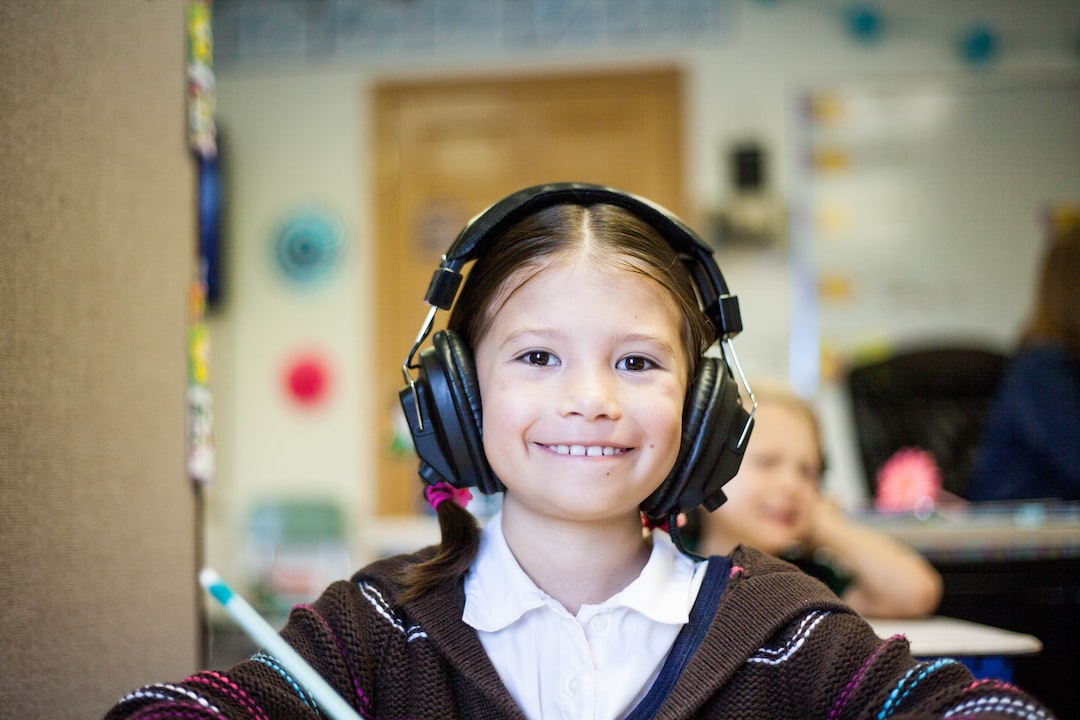Introduction
Table of Contents
The bedrock of personal progress and educational growth lies in the mastery of language and learning skills. Determining the level of these skills is essential for pinpointing individual needs, steering educational direction, and monitoring advancement. Enter the Assessment of Basic Language and Learning Skills (ABLLS), a transformative evaluation tool that shines in appraising the communicative prowess and learning competencies of children, especially those with developmental challenges or special needs.
This structured appraisal not just clears the path for precise instructional methods but also establishes the groundwork for an enduring educational experience. We will investigate the details of ABLLS, including its elements and how it fits into today’s educational systems. We’ll also compare ABLLS with other language assessment instruments and examine its broader advantages for language learning and advancement.
Understanding ABLLS: An Overview
Definition and History
Commonly referred to as ABLLS, the Assessment of Basic Language and Learning Skills is a gauge for measuring language and functional skills in children with language impairments or special needs. Created by Dr. James Partington and Dr. Mark L. Sundberg, its intention was to fill the void linking language assessment and curriculum crafting. ABLLS doubles as both an evaluative and educational guide, assisting educators and therapists in forming a custom educational path for each learner.
Key Components and Structure
The framework of ABLLS involves a sequence of tasks that evaluate capabilities in language, social interaction, self-help, and motor areas. Comprising two main parts—the ABLLS-R, an updated version—it features the Protocol, which is a detailed checklist of skills, and the Guide, which elaborates on conducting the assessment, interpreting results, and scoring. Its structured design is instrumental in assessing a child’s abilities holistically and devising an effective and individualized educational plan.
The Role of ABLLS in Language Learning
ABLLS stands out in the realm of language learning by evaluating both the reception and the use of language. It zeroes in on specific language development areas that require focus, ranging from simple verbal requests to intricate sentence structures. Identifying these areas allows educators to formulate interventions that enhance language uptake and cognitive growth, leading to beneficial outcomes within academic and social contexts.

The Relevance of ABLLS in Modern Education
Assessment in Early Childhood Education
The early years of education place a premium on growing foundational abilities, and ABLLS excels in this setting. It’s tailored to identify the specific developmental stages a child has reached and provides insight into the next steps necessary for their growth, creating an intentional and informed educational trajectory.
ABLLS for Special Education Needs
In special education, the finely detailed ABLLS framework is particularly significant. For children with autism or developmental hurdles, it offers deep insight into their challenges and strengths, allowing special education experts to formulate adaptive and specialized learning plans that cater effectively to individual requirements.
International Perspectives on Language Assessment
Assessing language, inclusive of ABLLS, is a universal educational focus. While ABLLS’s core principles have global relevance, its application and adaptation may vary based on different educational systems and cultural contexts. Worldwide, ABLLS has been tailored to suit various educational standards, showcasing its ability to adapt while upholding its fundamental aim of supporting language and learning.
ABLLS Versus Other Language Assessment Tools
Comparing Methodologies and Effectiveness
Comparative to other language assessment tools such as the Peabody Picture Vocabulary Test or the Preschool Language Scale, ABLLS is characterized by its task-based, functional language evaluation, rather than just assessing a child’s capacity to identify images or respond to queries. Many practitioners view ABLLS as a more genuine indicator of a child’s communicative abilities.
Pros and Cons of ABLLS
ABLLS is renowned for its comprehensive structure and ability to customize to the learner. Its main criticism, however, stems from being resource-intensive and requiring skilled professionals for effective administration. Although praised for its precision, the resource demands of ABLLS may not be feasible for every educational setting.
Critical Reviews and Academic Perspectives
The academic community has examined ABLLS from various angles, leading to a mix of praise and calls for further empirical evidence regarding its efficacy. While views are mixed, the consensus acknowledges ABLLS’s considerable contribution to language education, sparking ongoing debate and scholarly exploration.

Preparing for ABLLS Assessment
Resources Needed for Assessment
A successful ABLLS assessment requires a variety of resources such as the ABLLS-R protocol, related flashcards, everyday objects, and a supportive environment. Educational and therapeutic institutions must make sure these materials are ready and appropriate for the child’s age and developmental stage.
Training for Educators and Assessors
Adequate training is critical for assessors to guarantee the assessment’s accuracy and reliability. They should be well-informed about behavioral analysis and the stages of language development. Training programs and continuous professional development are key in equipping educators and assessors for the assessment’s effective use.
Creating a Conducive Assessment Environment
The environment where the ABLLS is administered can greatly affect the results. It’s important to have a quiet, distraction-free setting where children can feel comfortable and perform optimally. Such considerations are vital for an accurate representation of a child’s abilities.
Conducting the ABLLS Assessment
Step-by-Step Guide to the Process
The meticulous execution of the ABLLS assessment involves observing and documenting a child’s performance over a spectrum of tasks. Assessors carefully traverse the protocol, ensuring a thorough evaluation of each skill.
Observational and Direct Testing Techniques
ABLLS utilizes a combination of observational and direct testing methods to offer a complete picture of the child’s skills. This melding of approaches accommodates different styles of learning and responding.
Documenting Progress and Providing Feedback
Throughout the assessment, it is imperative to record progress meticulously to help in crafting Individualized Education Programs (IEPs) and to communicate findings to all involved parties. Feedback derived from the assessment can guide everyone in understanding the child’s strengths and areas for growth.
Interpreting ABLLS Results
Understanding Scores and Proficiency Levels
ABLLS scores represent proficiency across various skill areas, and assessors must be skilled at interpreting these to gauge development against typical benchmarks. This deep understanding informs the decisions for the child’s future learning path.
Using Results to Tailor Education Plans
The results from ABLLS inform the creation of personalized education plans that cater to the child’s unique needs, ensuring that learning is both engaging and effective.
Communicating with Parents and Caregivers
When conveying ABLLS findings, clear communication with parents and caregivers is paramount. This partnership is key to a unified approach to the child’s educational progression, ensuring all parties share the same goals and expectations. It’s imperative that parents and caregivers feel supported and in the loop, reinforcing their involvement in their child’s learning journey.

Challenges and Considerations in ABLLS
Addressing Cultural and Linguistic Diversity
Adapting ABLLS to account for the child’s cultural and linguistic context is critical for maintaining the assessment’s legitimacy. Care must be taken to ensure that the materials reflect the child’s background accurately.
Limitations and Criticisms of ABLLS
ABLLS is not without its critics. Some call for more robust evidence supporting its effectiveness in varied populations and educational settings. Moreover, there’s concern about its potential rigid use, rather than adapting it as a dynamic educational instrument.
Adapting ABLLS for Different Learning Environments
Adapting ABLLS to suit different educational contexts requires innovation and a commitment to customization. Its flexibility is essential for its application in a variety of classroom settings.
Future of Language Assessment: Beyond ABLLS
Technological Enhancements in Language Assessment
Emerging technologies and AI-powered tools are set to augment and possibly improve traditional methods like ABLLS, offering immediate feedback and tracking learning trajectories over time.
Combining ABLLS with Other Methods and Tools
An integrative approach that amalgamates ABLLS with other methodologies is gaining favor for a more comprehensive language assessment.
Predicting the Evolution of Language Assessments
As scholarship and educational strategies evolve, the field of language assessments is expected to keep pace. Embracing this evolution means acknowledging ABLLS’s roots while welcoming new methods that accommodate a diverse and global pupil demographic.
Conclusion
The assessment of basic language and learning skills plays a critical role in educational achievement. ABLLS has proven its worth, influencing education plans tailored for diverse learners. Moving forward, advancements in language assessment research will enhance tools like ABLLS, ensuring their continued relevance and effectiveness for supporting language growth. The journey of language assessment is ongoing, and as educators and involved parties, we must be ready to adapt and innovate to provide the best for every child in their learning endeavors.
FAQs on Assessment of Basic Language and Learning Skills (ABLLS)
What exactly is the Assessment of Basic Language and Learning Skills (ABLLS)?
ABLLS is an evaluative tool designed to measure language and functional skills in children, particularly those with language impairments or special needs. It serves as a guide for educators to develop tailored educational plans.
How does ABLLS differ from other language assessment tools?
Unlike other assessments that may focus on image identification or response to questions, ABLLS is a task-based assessment that provides a more functional evaluation of a child’s language skills.
What are some potential criticisms of ABLLS?
Critics argue that ABLLS can be resource-intensive and requires specially trained professionals for administration. There’s also a call for more empirical evidence to support its effectiveness across diverse settings.
Is ABLLS appropriate for use in various cultural and educational contexts?
ABLLS has been globally adapted to fit different educational systems and cultural contexts, though care must be taken to ensure that the assessment materials are culturally and linguistically appropriate.
What does the future look like for the assessment of basic language and learning skills?
Expect to see technological advancements enhance traditional methods like ABLLS, with tools offering immediate feedback and long-term tracking, and a continued evolution of integrated language assessment strategies.